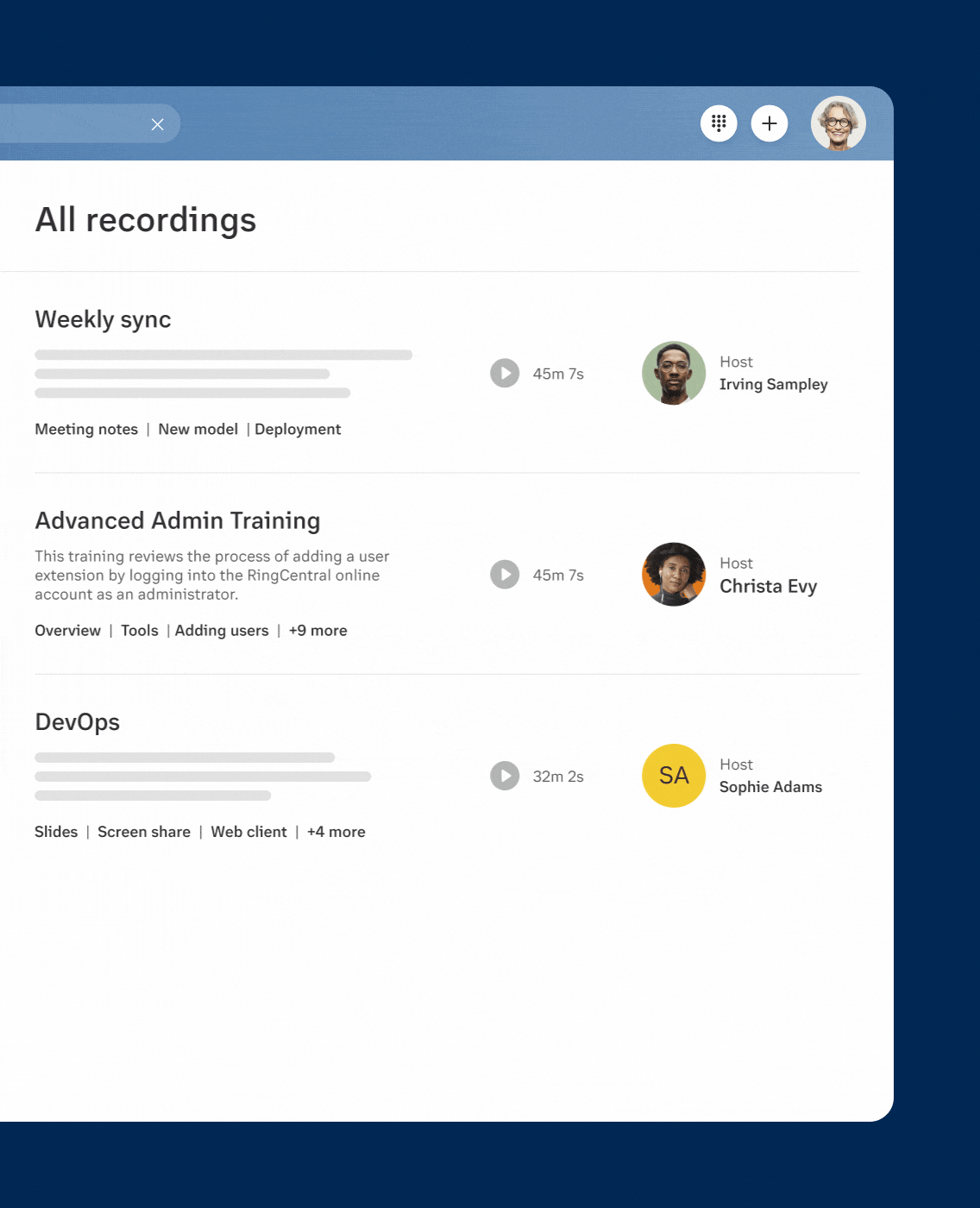Photo source: AI-generated art from OpenArt.ai, in the style of artist Tristan Eaton
2023 is being widely touted as the “Year of AI”, and the current buzz around Generative AI – namely ChatGPT and Bard – is pretty good validation already. There’s much more to come on that front, but before hopping from trend to trend, IT leaders should first step back and look at the bigger picture.
AI comes in many forms, but not all offerings are created equal, and caveat emptor definitely applies here. There are no accepted standards to verify that an “AI” offering is actually AI-based, and since this space is not well-understood, it can be difficult to know what you’re really getting. That said, AI is a hotbed of innovation, and with all the exciting advances, the potential is too promising to ignore.
For proper context, AI must be viewed in broader terms than just the use cases for UCaaS or CCaaS. Important as these are to the success of your business, it’s important to recognize that AI is driving innovation now across all forms of technology, which means that everything UCaaS or CCaaS touches will also be impacted by AI. This is why AI will be so transformational, and whether or not you embrace it for collaboration or contact center today, their future is going to be shaped by AI.
Why AI now?
In terms of why AI has become so prominent in 2023, there are two driving forces to consider. First is the ascendancy of cloud as the deployment model of choice for most forms of technology. While this trend has been building for years, the pandemic truly accelerated cloud adoption, and given how well the cloud has performed with all these unprecedented demands, it’s getting harder to justify keeping the status quo with legacy, premises-based technology.
The second factor is the continued impact of digital transformation, where artifacts from the analog world are rapidly becoming digitized. This process will take many years, but as our lives become increasingly digital, there will be more data points to quantify what we do, say, and eventually, even think.
Data is the lifeblood of AI, so combine this with all the digital channels and applications we’re persistently using, and it’s easy to see why AI is now poised to become mainstream. This type of transformation is different from what’s come before, where new forms of tech were deployed by humans, and for humans. With AI, though, these new capabilities are beyond what humans can manage on their own, and AI plays more of a side-by-side role with humans to realize its potential.
AI’s potential, of course, is a double-edge sword, as it can just as easily be used for surveillance, control, and manipulation as it can for purposes of good, both for individuals and society at large. Discussion around the former requires a separate analysis, and for this article, the focus will be on beneficial applications for businesses, namely UCaaS and CCaaS.
The use case for AI in UCaaS

RingCentral Meeting Insights uses AI to craft meeting summaries, highlight reels, and more.
UCaaS adoption trends remain strong, and its success to date has had little to do with AI. As such, it’s fair to ask what AI can bring to make the UCaaS value proposition even better. Anyone using UCaaS knows how feature-rich it is, but as with all cloud-based services, the barrier to entry is much lower than it was with hardware-based technologies. This has made for a crowded market, with dozens of cloud providers offering various flavors of UCaaS.
For buyers, this is good news, not just for lower prices from players vying for your business, but also for having a lot of choice in the market. However, this puts the onus on IT to evaluate many offerings, and with the core features being common now, UCaaS is often being sold like a commodity.
Most cloud providers can address the core communications needs that UCaaS addresses, and to differentiate, these players are now turning to AI. Many use cases for AI are in the market now, such as speech to text, real time transcription, real time translation, smart framing for video, etc. These are high-utility applications that simply cannot be supported with legacy forms of UC, and considering the challenges to support hybrid work and a distributed workforce, you should be thinking about AI right now as a value-driver for UCaaS.
You shouldn’t stop there, though, as this is really just the first wave of AI-driven innovation for UCaaS. The core building blocks of AI – Machine Learning, Natural Language Processing, etc. – become more accurate and more “intelligent” the more you use them, so their capabilities will steadily improve over time.
New use cases are emerging that build on this foundation, so you should also be thinking about applications like meeting summaries with action items and voice-driven digital assistants that can manage your schedule and help automate workflows. More is on the horizon, so it’s best to think of AI as an enabler of continuous innovation to make workers and teams more productive.
The use case for AI in CCaaS

AI for customer service can help measure customer—and agent—sentiment to provide real-time coaching and quicker resolutions.
While contact centers have lagged in the workplace in terms of cloud migration, their adoption of AI has been more aggressive, mainly because it addresses pressing pain points. The pandemic has been doubly problematic for contact centers, and AI brings different capabilities than those used with UCaaS.
First is the problem posed by higher call volumes due to the disruption to businesses caused by the pandemic, and they’ve stayed high ever since. Compounding this is the Great Resignation effect, where service industry workers exited in large numbers, including contact center agents.
With fewer agents and higher volumes, contact centers have been hard-pressed to provide good customer service, not to mention meet the higher expectations customers now have from being so immersed in digital technology. Most contact centers do not have the luxury of spending their way out of this problem, and given AI’s ability to automate some forms of customer service – on a 24/7 basis – this has been a key driver for contact centers to adopt AI.
We’re still in early days of having AI-driven chatbots handle self-service to lighten the load on agents, but as noted above, these applications keep improving and will undoubtedly play a larger role in the contact center. First-generation chatbots have hardly been an improvement over legacy IVR, but recent advances with conversational AI have clearly taken this form of customer service to another level.
Generative AI is just the latest iteration of AI, and contact center use cases have already found their way to market. For agents, applications like ChatGPT can be used to generate scripted responses on the fly; customers could use text-to-image apps like DALL-E to visually describe the product or environment their situation is set in. Other emerging use cases include voice biometrics for fraud detection, and sentiment analysis to first recognize customer anxiety, then coach the agent with responses to restore calm and produce a positive outcome.
Taking the next step with AI
These are just a few examples of real use cases for AI, and many more are on the horizon. No doubt that AI can be very problematic in the hands of bad actors, and IT leaders must be vigilant to monitor for red flags. Furthermore, in an effort not to be left behind by competitors, vendors have a gold rush mentality with AI, and it’s not easy to separate hype from reality. Such cautions are to be expected, but they should not be reasons to steer clear of AI altogether.
What’s most important here is to recognize why AI is gaining so much traction now, and how that sets the stage for an entirely new and different set of innovations. Today’s UCaaS and CCaaS platforms can perform very well without AI, but once you see what’s possible with AI added, you start to think differently about communications, collaboration and customer experience.
IT leaders should also keep in mind that both customers and workers are largely coming from the digital generation. This cohort natively understands digital technology and digital experiences. Their expectations are different from those rooted in the analog world, and while AI may seem like science fiction to some, they are ready for it today, and you might be surprised by how easily they embrace it.
Jon Arnold is an independent research analyst providing thought leadership and go-to-market counsel with a focus on the business-level impact of disruptive communications technologies. JAA works primarily with vendors and service providers to educate their customers on the value of these technologies and to accelerate the adoption of their offerings. https://www.jarnoldassociates.com/
Originally published Apr 04, 2023
Looking For Startup Consultants ?
Call Pursho @ 0731-6725516
Telegram Group One Must Follow :
For Startups: https://t.me/daily_business_reads







